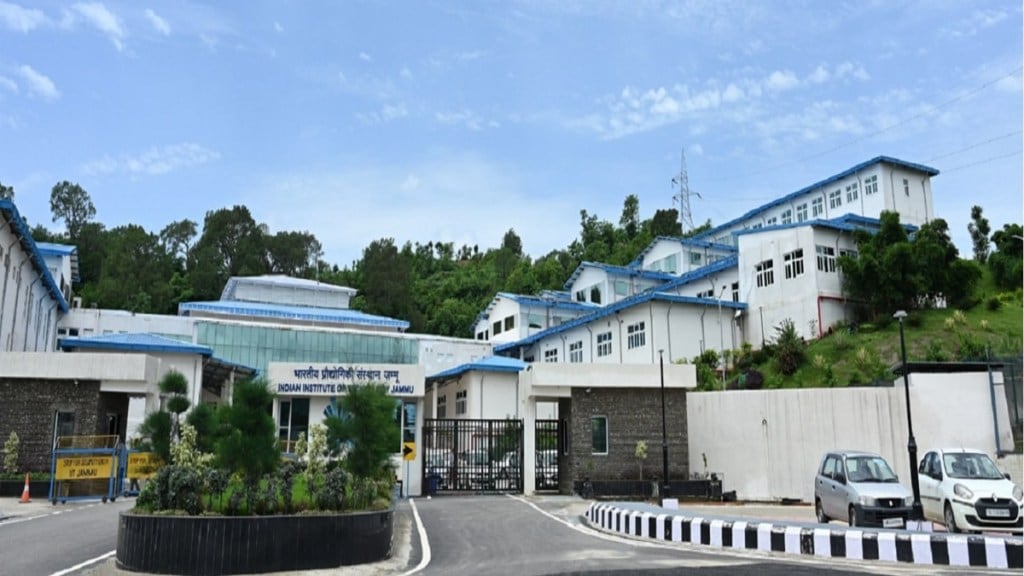The Indian Institute of Technology (IIT) Jammu is among the six new IITs that were established in 2015-16 (others are Palakkad, Tirupati, Bhilai, Goa and Dharwad). But even eight years later, the campus is work-in-progress. “From 2016-19, physical growth was slow, as the region experienced geopolitical disturbances and curfews, and in 2020 the Covid-19 lockdown impacted us,” says Prof Manoj Singh Gaur, director, IIT Jammu.
In an interview with FE’s Vikram Chaudhary, he adds that the revocation of the special status of Jammu and Kashmir – under Article 370 – has removed many bottlenecks to growth. Excerpts:
Why is the main campus still work-in-progress even eight years after IIT Jammu was established?
IITs are large institutes, and infrastructure growth never stops – it’s happening even at older IITs like Bombay, Delhi and Madras.
In our case, there were certain other bottlenecks. For instance, in 2016, in the aftermath of Burhan Wani’s death, there were widespread protests and regular curfews and shutdowns, which severely disrupted economic activities.
In August 2019, when the government revoked Article 370 of the Constitution, the region saw a communication blackout. That was followed by the Covid-19 lockdown in 2020.
But since then, growth has been fast, and we are on track to have a fully functional campus soon. I must add that even though physical growth was impacted, intellectual growth at IIT Jammu never stopped.
What happened after Article 370?
There has been a positive impact. Previously, there used to be regular curfews in the region, but over the last 2-3 years we haven’t seen any major shutdowns. Also, there were logistical challenges prior to August 2019 – when there were different rules for movement of goods and services in J&K and the rest of India, and even different taxation. With the revocation of Article 370, there is homogeneity in rules, and getting goods from anywhere to Jammu is not at all a challenge.
How will the new campus be different?
We are building infrastructure keeping in mind the fragile Himalayan ecosystem. If trees are being cut to build a classroom, lab, road or hostel, many more are planted elsewhere. We have a large waterbody to reuse rainwater. By next year, it will be a green and a walkable campus.
Being in Jammu – a non-metro city – is it difficult to attract good faculty?
A while ago a major concern was that there weren’t enough job opportunities for the spouse of the faculty joining us. But now Jammu has an IIM, AIIMS, a lot of private institutes, and with them is coming the industry. We are seeing more and more job opportunities with every passing month, and some jobs for spouses are even coming up in the IIT Jammu ecosystem.
How is IIT Jammu contributing to the development of the region? Do you have reserved seats for local students?
For BTech, we can’t have reserved seats for the locals, as these admissions happen via JEE (Joint Entrance Examination). Similar is the case with MTech, for which we follow COAP (Common Offer Acceptance Portal) guidelines.
But we are creating capacity in Bachelor of Science (BS) programmes, in which we can accept students based on Board exam scores, or how well they have done in an Olympiad, or students from the Kishore Vaigyanik Protsahan Yojana (KVPY), the national fellowship programme.
This BS degree will have the same value as a regular IIT BTech.
We have seen that in PhD programmes, a lot of local students are joining us – those who got admission in faraway engineering colleges, but have chosen IIT Jammu because they want to be near home.
Will you have a satellite campus in Leh or Srinagar?
It’s too early. We were asked the same question in 2018 by then-government, but we are waiting to reach a certain critical mass in faculty (200-250 members). But in Ladakh we are setting up an incubation centre (Atal Campus).
The IIT Jammu logo looks really cool…
Yes, it’s a map of the entire region (Jammu, Kashmir and Ladakh) made out of books and water, with the Ashok Chakra in between. The logo reflects our aim – of becoming a zero-waste, circular economy. IIT Jammu aims to become a role model for the entire region, and our buildings/structures preserve water.

